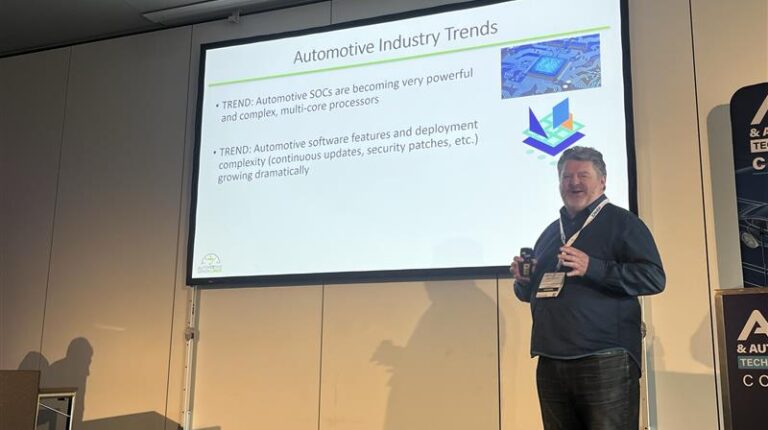The idea of the software-defined vehicle (SDV) has gained significant traction in the automotive industry, as manufacturers seek solutions to meet the growing software demands of features such as ADAS and autonomous driving. In response, many auto makers and industry groups are embracing open-source software for SDV development, inspiring contributions to open-source projects.
In his conference presentation at ADAS & Autonomous Vehicle Technology Expo, Dan Cauchy, executive director of Automotive Grade Linux (AGL), highlighted a shift toward open-source software for SDV development. Rather than duplicating efforts by creating extensive codebases for each product, Cauchy advocated a collaborative approach: “100 million lines of code, shared by everyone”.
Instead of relying on dedicated processors or system-on-chips (SoCs) for each function, the open-source approach promotes a one-size-fits-all model. By decoupling hardware from software, this strategy allows individual functions to be updated independently. “These functions can be managed remotely through over-the-air updates,” Cauchy explained.
AGL is currently used or supported by several OEMs, such as Toyota, Mazda, Hyundai, Subaru, Mercedes-Benz and Suzuki. Cauchy added that the “silent software” can be used for the development of many vehicle elements, including in-vehicle infotainment, instrument clusters and digital dashboards, telematics units and head-up displays, without users realizing that Linux is running behind the scenes.
Open source, he noted, is intended to provide a shared foundation, covering 70-80% of the starting point for a production project. However, the platform continues to grow. Through numerous updates to the open software platform (named after fish), the platform continues to grow and enable smarter technologies. The latest release, Quirky Quillback, introduced key enhancements, including Flutter integration, improved web application support, upgraded connectivity features and expanded hardware compatibility. Cauchy believes that in addition to such updates, the adoption of open-source platforms is required. “We need to use open source to grow open source,” he said. “By doing so, we can show executives why open source is beneficial – and why you should contribute.”
To reinforce the role of open source in safety-critical systems, Cauchy pointed to the recent ELISA (Enabling Linux in Safety Applications) collaboration, launched in April 2025. In this project, AGL is working on advancing functional safety by analyzing current open-source software (OSS) development practices, identifying key performance indicators (KPIs) and developing a framework to assess how well OSS projects align with safety and security objectives, industry standards and regulatory requirements.
Looking ahead, Cauchy highlighted the increasing relevance of AGL in the evolution of ADAS technologies, as the automotive industry pushes deeper into the software-defined era.
Cauchy ended his presentation with a teaser to the audience: “AGL is holding discussions with Nvidia, but we cannot disclose any further information at this time.”
The ADAS & Autonomous Vehicle Technology Expo Conference continues today and tomorrow. Click here to purchase your delegate pass



